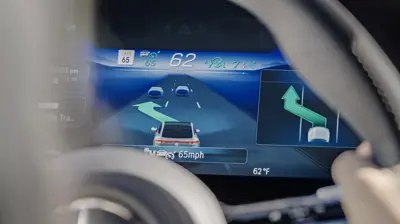- ADAS
- ACC
- ABS
- ALC
- AEB
- AES
- APA
- BSM
- CAS
- DDD
- DMS
- Efficiency Assist
- ESC
- Exit Warning
- FCW
- FCTA
- LCA
- LDW
- LKA
- RCTA
- TSR
Automated Lane Change
Automated Lane Change (ALC) is an advanced driver assistance system (ADAS) that allows a vehicle to change lanes autonomously, without requiring the driver to steer or take manual control.
Automated Lane Change (ALC) systems are typically found in higher-end vehicles. They use a combination of sensors and cameras to detect other vehicles on the road and determine when it is safe to initiate a lane change.
How It Works
- Driver Signals Intent: The driver activates the turn signal to indicate the intention to change lanes.
- Environment Scanning: The ALC system uses sensors and cameras to scan the surrounding traffic and identify any obstacles or vehicles in the way.
- Path Calculation: The system calculates the optimal path for the lane change, considering the speed and position of other vehicles.
- Lane Change Initiation: If the path is clear, the ALC system initiates the lane change by applying steering input to the vehicle.
- Continuous Monitoring: The system continues to monitor the surrounding traffic and adjusts the vehicle's speed and trajectory as necessary to complete the lane change safely.
- Completion: Once the vehicle is safely in the new lane, the ALC system disengages, allowing the driver to resume full control.
The following video demonstrates how the ALC system works in a Mercedes-Benz vehicle.
Important Considerations
- Driver Attention: ALC systems are not capable of handling all driving scenarios. The driver must remain attentive and ready to take control of the vehicle at any time.
- Limitations: The system may require the driver to take control in certain situations, such as poor road conditions or unexpected obstacles.
- Not a Replacement: ALC systems are designed to assist the driver, not replace them. The driver is still responsible for the safe operation of the vehicle.

